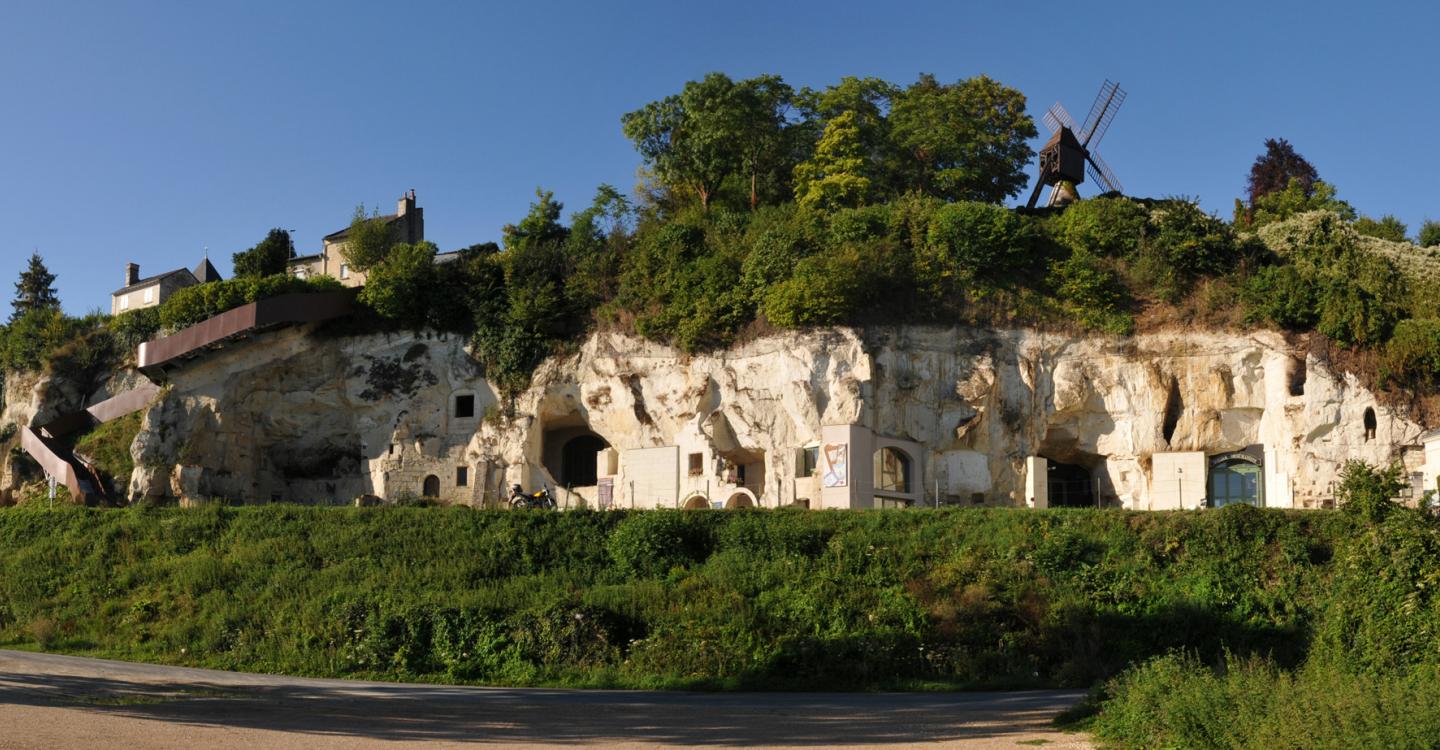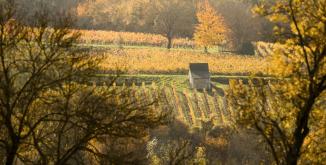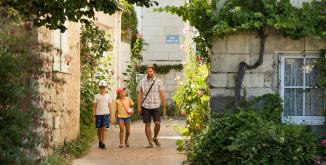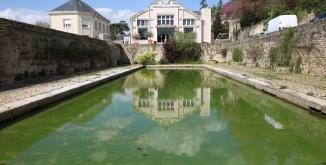The region has thousands of kilometres of underground galleries, initially dug to extract tufa and shelly sand which are the two emblematic stone types of the territory.
It is important to erase some popular believes before saying more about the so-called “troglos”:
- A resident of a troglo is called a troglodyte. Whereas his residence is a troglodytic house or, to keep it short, a troglo.
- Tufa is mined in horizontal galleries, starting at a vertical front such as a hillside. Shelly stone mining is done vertically, starting from the ground. The deeper you dig, the larger the cage becomes and progressively takes the shape of a monumental ogive.
The emblematic buildings of the region are built with tufa. Shelly stone is also used for constructions, but only close to Doué-la-Fontaine. These stones have also served to produce sarcophagi as well as lime for agricultural use.
After centuries of mining activity, the quarries are shut down at the beginning of the 20th century. But the sites are not abandoned: the caves are transformed into mushroom farms and wine caves and more recently into visitors’ sites telling the history of this underground galleries. Even the Bioparc of Doué-la-Fontaine has taken headquarters in a former shelly sand quarry, being the only troglodytic zoo of the world!
Their extraordinary properties have also encouraged projects of troglodytic housing: these underground accommodations were cheap, naturally isolated and easy to look after and to extend. When necessary, you just had to dig a new room or a custom-made bench.
Since the 1970s, several associations work to safeguard and animate this heritage. New ways of using them (restaurants, museums, holiday apartments, arts and crafts galleries, …) have allowed to revitalise these exceptional sites. Some of them have been reused for housing as well.
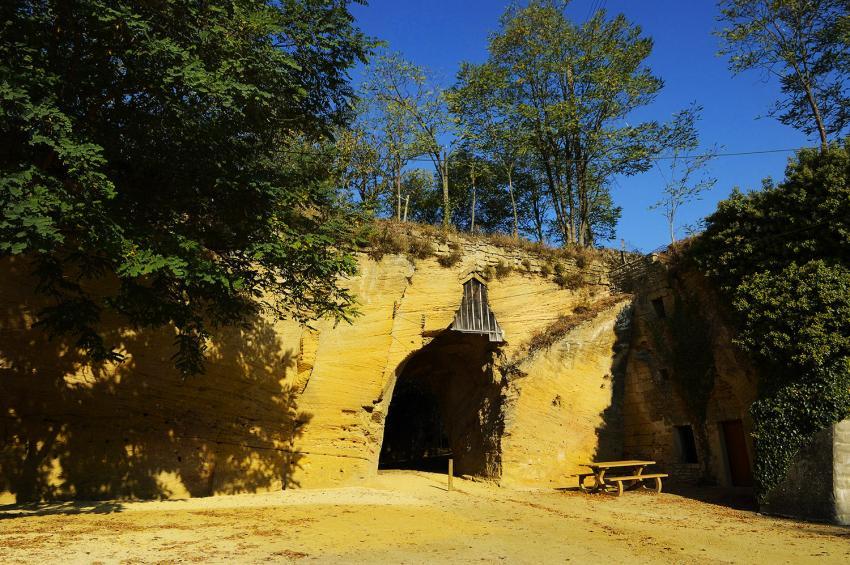
The tufa – the emblematic stone of the territory
Tufa is a light coloured, sometimes almost white limestone formed by the subsidence and cementing of more than 90 million years old marine sediments. The Saumur region holds its nickname “white Anjou” from the colour of its limestone soils. Whereas the Western part of the Maine-et-Loire department with its slate and schist soils is also called the “black Anjou”.
Tufa is used to build houses, churches, castles and public buildings. From the 15th to the 19th centuries, the main tufa stone mining spots are situated on the hillsides around Saumur and Chinon and along the Loire and Vienne riversides. The waterways allow its exportation. This is how the cathedral of Nantes and the Parliament of Brittany in Rennes have been built with tufa from the Saumur region!
Calcite stone of poorer quality is used for the production of lime. It is calcinated at high temperature in a kiln. In the building sector, lime is used to produce mortar. In the 19th century, it is also used for agriculture. Lime diminishes the acidity of soils and improves their yield. The recently restored lime kilns in Dampierre-sur-Loire are witnesses of this usage.
In the early 20th century, tufa mining declines before stopping completely after the Second World War. Cut stones are replaced by more modern building materials. Many quarries are abandoned; others are transformed into mushroom farms in the 1960s. Around Saumur, Chinon, Bourgueil and Azay-le-Rideau, some have been reused by wine growers and wicker basket-makers since the end of the 19th century.
Tufa mining is reactivated in Saint-Cyr-en-Bourg in the 1960s in order to allow the renovation of historical monuments such as the Fontevraud abbey.
The shelly sand – stone of the flatlands
Compared to tufa, shelly sand (also called “grison” in the region) is a more recent sedimentary rock, dating back to the Middle Miocene, 12 million years ago. At this time, a shelly sand sea covers the territory of the Loire-Anjou-Touraine Park: the sedimented deposits of sea shells have, little by little, turned into shelly sand.
Shelly sand can mainly be found in then Doué-la-Fontaine region, but also around Sainte-Maure-de-Touraine and the Lathan valley. The usage of this stone was quite similar to tufa stone: construction material and production of lime for building sector as well as the amendment of farm land. From the 5th to the 8th century (Carolingian period), shelly sand is also used for the production of sarcophagi which are exported to the West of France.
Today, shelly sand stone mining does not exist anymore. Some of the quarries have become mushroom farms, others visitors’ sites. Les Perrières, in Doué-la-Fontaine offer both tourist accommodations and a free discovery tour called “Le mystère des faluns” (shelly sand mysteries).
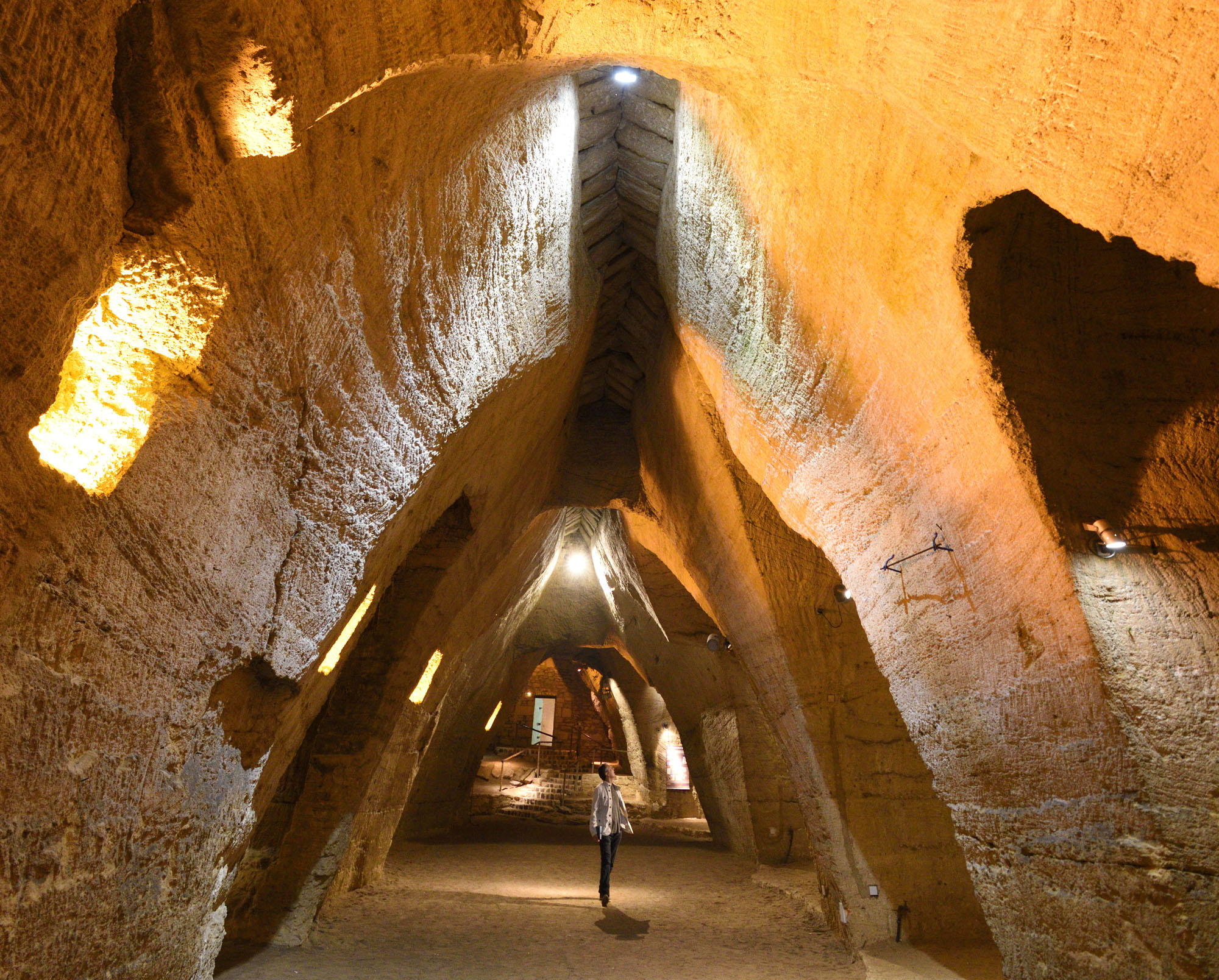
Troglodytism on the hillsides
Along the Loire river and it affluents, galleries have been carved into the hillsides made of limestone. Horizontal troglodytism exists in different regions of France, but there is an extraordinary concentration of sites near Saumur and Chinon.
Between Montsoreau and Saumur, the hillside is crammed with caves. Troglodytic housing does not seem to have been kept for particular social classes. Many of the caves are basic, others have façades cut of stone. In Turquant, Dampierre, Souzay-Champigny or Parnay (Saumur hillsides), you can find elegant seigneurial residences with their staircases, dovecotes, huge chimneys, … carved into the hillside. La “Grande-Vignolle” in Turquant is a great example of a seigneurial troglodytic manor. It is open to free visits all year long. Please keep in mind, that it is really dangerous to stroll around abandoned troglodytic sites.
We suggest the visit of the troglodytic discovery trail in Souzay-Champigny where you can also see a “fontis” (cave-in) witnessing hidden risks in certain galleries.
In Chinon, the last inhabited hillside is cleared in the early 1980s for safety reasons. The underground houses are destroyed and walled in, but you can still admire the troglodytic chapel of Sainte-Radegonde. Just around the corner, in Azay-le-Rideau, the Troglodyte valley of the Goupillières invites you to live a day in a peasant’s life of the 19th century. The troglodytic village of Villaines-les-Rochers has also managed to take advantage of this heritage: it has become the hotspot of basket-making.
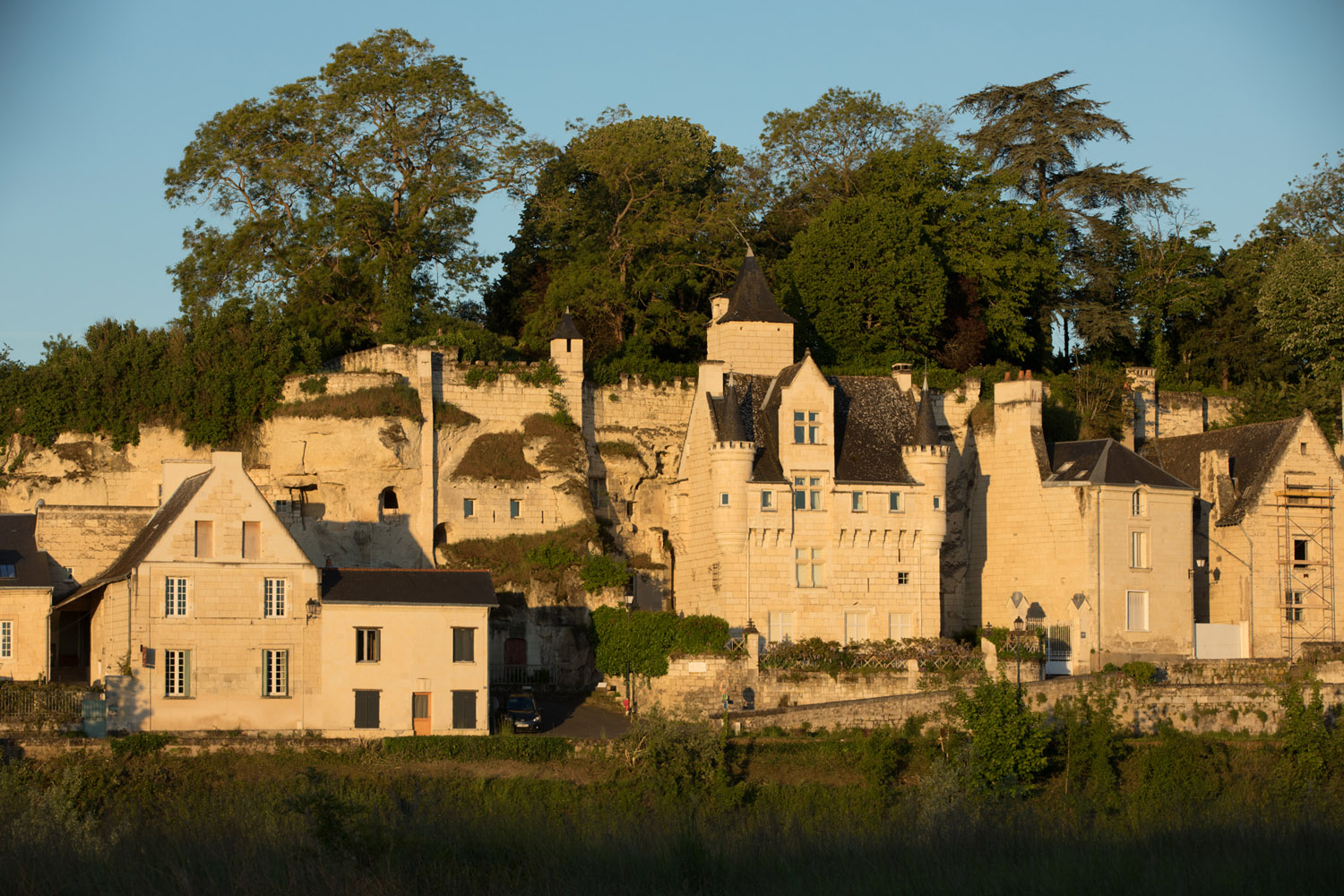
Troglodytism in the flatlands
In France, troglodytism in the flatlands only exists in the Doué-la-Fontaine region. It is a method of digging the soil vertically and forming a courtyard in the first place, also called a “carrée” or “carrie” which can be accessed by a ramp (also called “courdouère” in Anjou). From this artificial courtyard, the habitation is dug into the rock. It’s like the world turning upside down: underground houses with gardens on their top!
The village of Louresse-Rochemenier is a great example of troglodytism in the flatlands dug into tufa stone. You can find two farms with farm houses, a chapel, cellars, granaries, a stable, a sheep barn, a bread oven, wells, etc. there. The furniture and tools of the 19th century complete the picture of peasant life from long ago.
Sculpture lovers will be happy to visit the Cave of sculptures of Dénezé-sous-Doué or Jacques Warminski’s “Hélice Terrestre”.
Richard Rak’s art gallery in Coutures or and the houses in the rue des Perrières in Doué-la-Fontaine are also very poetic troglodytic sites to discover.

